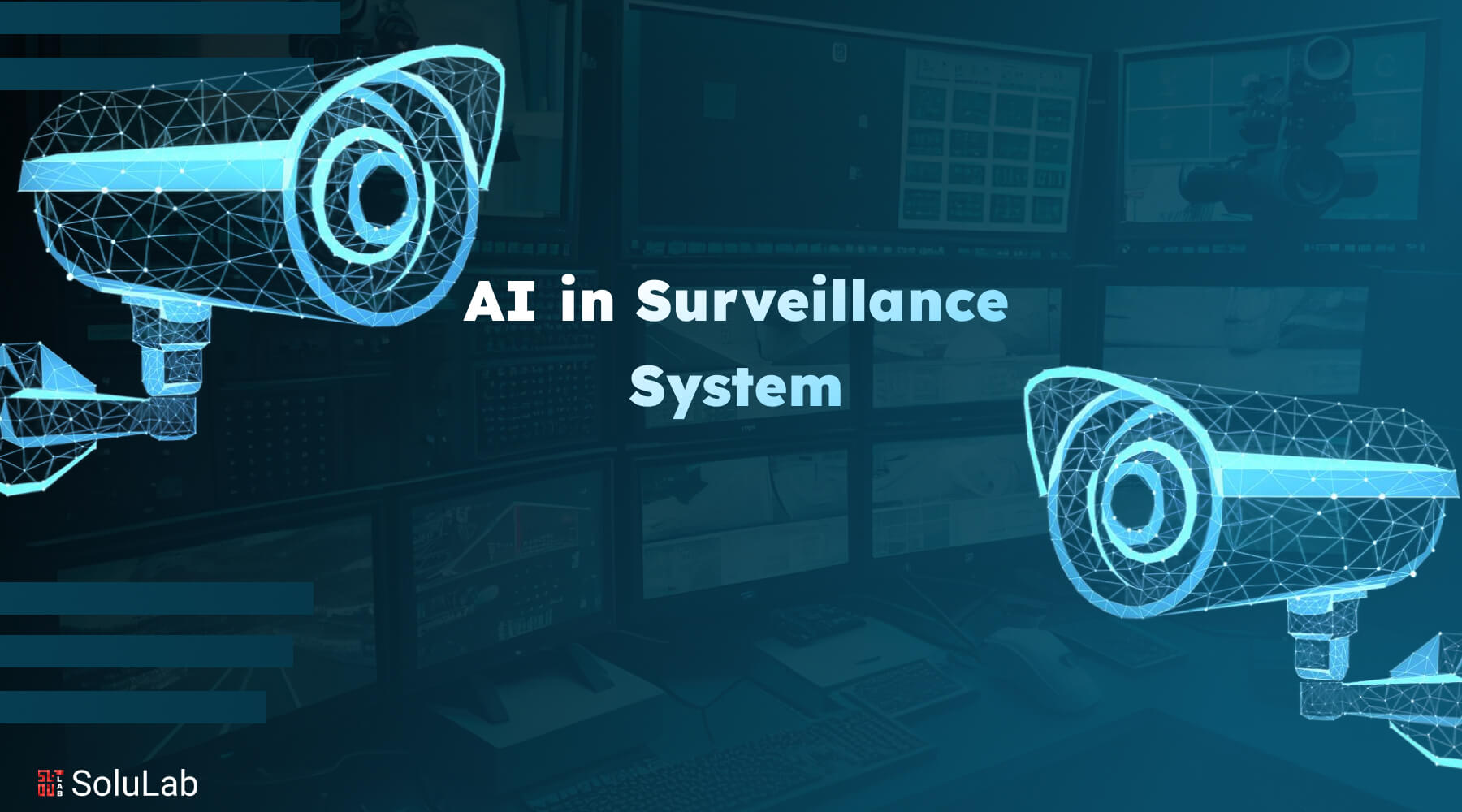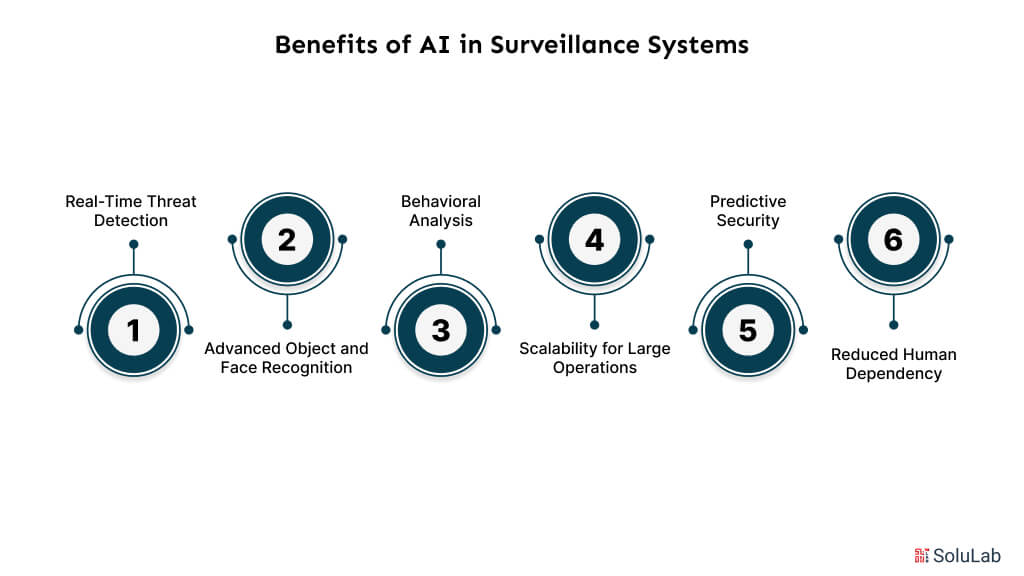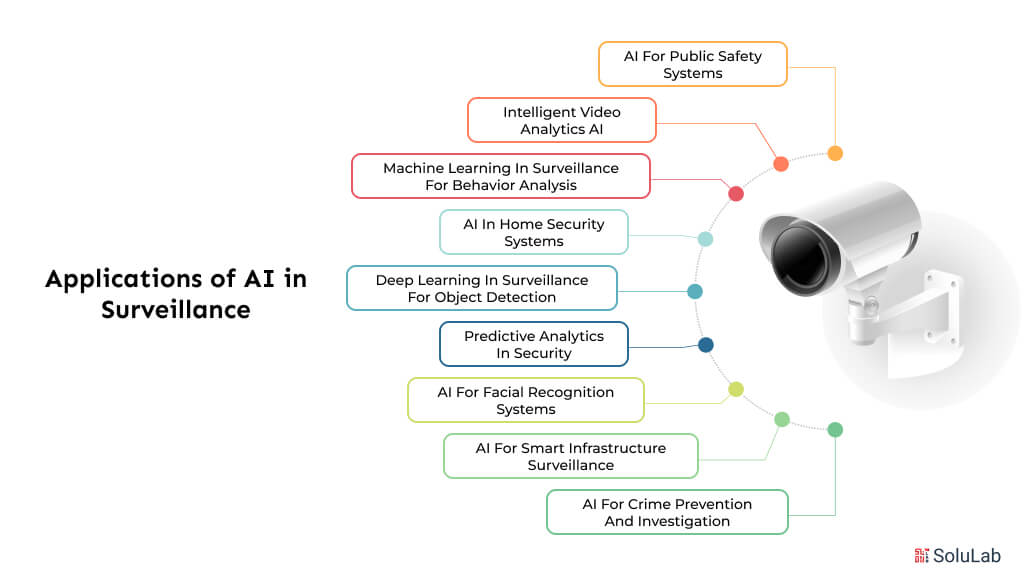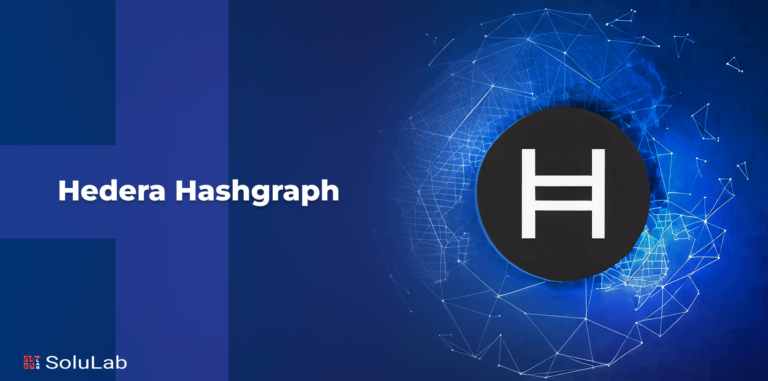
Artificial intelligence (AI) has altered surveillance systems, making them more efficient and effective. By integrating AI into surveillance systems, particularly in closed-circuit television (CCTV) networks, organizations can now automatically detect unusual activities, recognize faces, and monitor large areas with minimal human intervention. This advancement not only improves security measures but also optimizes resource allocation, allowing personnel to focus on critical tasks.
The adoption of AI-powered surveillance is on the rise globally. For instance, China has implemented an extensive network of over 170 million CCTV cameras, many equipped with facial recognition technology, with plans to install an additional 400 million cameras in the coming years.
Similarly, in India, cities like Hyderabad have been ranked among the top 20 most surveilled cities worldwide, with approximately 30 CCTV cameras per 1,000 people as of 2020. In this blog, we’ll talk about how AI in surveillance systems is changing the way we approach security and monitoring. From smarter artificial intelligence in CCTV cameras to fully automated AI-powered surveillance, we’ll explore how these technologies are helping us detect threats faster, analyze patterns, and monitor spaces more effectively. AI is making surveillance smarter, reducing the need for constant human attention while improving accuracy.
How AI Enhances Surveillance Systems?
Artificial intelligence has brought a significant improvement to how surveillance systems function. Unlike traditional methods, which relied heavily on human monitoring and manual review of footage, AI-powered systems offer a smarter, faster, and more reliable approach to security. With the integration of AI in video surveillance, security operations have become more efficient and less prone to human error, enabling quicker responses to potential threats.
Key Benefits of AI in Surveillance Systems

Here are some of the key benefits of using AI Surveillance Software for a business:
-
Real-Time Threat Detection
AI in surveillance systems can identify unusual activities, unauthorized access, or potential threats as they happen. For instance, an AI security camera system can immediately detect an abandoned object in a crowded area or identify loitering near restricted zones, ensuring timely alerts and appropriate actions.
-
Advanced Object and Face Recognition
AI surveillance technology can recognize faces, vehicles, and even specific objects like weapons. This capability is crucial for applications like border security or law enforcement, where tracking individuals or identifying stolen property is essential.
-
Behavioral Analysis
AI systems analyze patterns of behavior to detect anomalies, such as individuals moving in restricted areas or acting suspiciously. This helps minimize risks and enhances safety in various environments.
-
Scalability for Large Operations
Industries like airports, stadiums, and large corporations often need to monitor hundreds of cameras at once. AI simplifies this by analyzing multiple video feeds simultaneously, prioritizing critical incidents, and providing relevant alerts to security teams.
-
Predictive Security
AI not only monitors current activity but can also predict potential risks. Analyzing historical and real-time data can forecast threats, such as a possible break-in or unauthorized access, allowing for preventive measures.
-
Reduced Human Dependency
Traditional surveillance relies on human operators who may experience fatigue or distractions. AI-powered systems eliminate these issues, offering 24/7 monitoring with consistent accuracy and reducing the need for large security teams.
The Practical Impact of AI Surveillance Technology
AI surveillance technology is making security and monitoring systems more efficient and actionable across various industries and environments. By integrating artificial intelligence into surveillance, organizations are not just capturing footage but extracting valuable insights that drive better decision-making and safety outcomes. Here’s how AI-powered surveillance systems are practically benefiting different sectors:
1. Retail Security and Customer Insights
In the retail sector, AI in video surveillance plays a dual role: improving security and providing business intelligence. AI-powered cameras can detect shoplifting in real time, reducing losses for store owners. Beyond security, they analyze customer behavior, such as shopping patterns and time spent in specific areas. Retailers can use this data to optimize store layouts and improve customer experience.
2. Smart City Monitoring
For smart cities, AI security camera systems are essential for maintaining public safety. They can monitor traffic movement, detect breaches such as red light running, and alert authorities to accidents. AI technology can also flag overcrowding or suspicious activity in public spaces, enabling authorities to take timely action. This helps create safer urban environments while improving resource management, such as redirecting traffic or deploying emergency services effectively.
3. Healthcare and Hospital Safety
In healthcare facilities, AI surveillance technology ensures patient and staff safety. Cameras equipped with AI can monitor unauthorized access to restricted areas, detect falls among patients, or alert staff to emergencies in real-time. These systems also support contactless monitoring during outbreaks, reducing the risk of infection while ensuring proper care.
Read Blog: Artificial Intelligence in Healthcare
4. Industrial and Manufacturing Efficiency
Factories and industrial sites use AI-powered surveillance to enhance safety and operational efficiency. Cameras can detect unsafe practices, such as workers not wearing protective gear or unauthorized personnel entering hazardous zones. Additionally, AI helps monitor machinery and equipment, identifying maintenance needs before they lead to breakdowns or accidents.
5. Educational Institutions
Schools and universities benefit from AI surveillance technology to ensure a secure learning environment. These systems monitor for intrusions, unauthorized visitors, or incidents like fights or bullying. By providing real-time alerts, they help administrators respond swiftly to potential issues, protecting students and staff.
6. Law Enforcement and Border Security
AI surveillance is particularly valuable in law enforcement and border security. Facial recognition and behavioral analysis help identify suspects, track movements, and detect threats. At border crossings, AI systems can quickly scan large crowds, identify individuals of interest, and detect smuggling activities with high accuracy.
7. Traffic Management and Road Safety
On highways and roads, AI surveillance systems are helping manage traffic by identifying bottlenecks, monitoring violations, and detecting accidents. Some cities use AI technology to predict traffic patterns and optimize signal timings, reducing congestion and enhancing road safety for drivers and pedestrians.
8. Remote and Cloud-Based Monitoring
AI surveillance systems are increasingly integrated with cloud-based platforms, allowing organizations to monitor multiple locations remotely. This is especially beneficial for businesses with geographically dispersed operations, enabling centralized management and real-time decision-making.
Applications of AI in Surveillance

Artificial intelligence has found its way into various aspects of surveillance, transforming it into a highly intelligent and efficient system that meets the demands of modern safety and security. By leveraging technologies like machine learning in surveillance, deep learning in surveillance, and predictive analytics in security, AI applications in this field have grown significantly across different sectors. Below are some of the key applications of AI in surveillance systems:
1. AI for Public Safety Systems
AI plays a critical role in public safety by enabling real-time monitoring and analysis in urban environments. Cities worldwide are implementing smart surveillance with AI to detect suspicious behavior, overcrowding, or emergencies in public spaces. For instance, AI can analyze traffic camera feeds to identify violations, spot accidents, and even predict potential traffic congestion. These systems improve response times for law enforcement and emergency services, ensuring public safety is maintained effectively.
2. Intelligent Video Analytics AI
Traditional security cameras frequently depend on human operators to evaluate footage manually. With the introduction of intelligent video analytics AI, security systems can now automatically process and analyze video feeds. This application is widely used in monitoring restricted areas, identifying unauthorized access, and detecting unusual movements. The system can send alerts when predefined events occur, such as someone entering a no-entry zone, reducing the need for constant human monitoring.
3. Machine Learning in Surveillance for Behavior Analysis
AI-powered surveillance systems use machine learning in surveillance to learn and adapt to specific patterns over time. For example, these systems can recognize normal behavioral patterns in a shopping mall or office and flag anomalies, such as loitering near exits or erratic movements in sensitive zones. This type of behavior analysis enhances proactive security measures by identifying potential risks before they escalate.
4. AI in Home Security Systems
Home security has become smarter with the integration of AI in home security systems. AI-powered cameras can distinguish between humans, animals, and inanimate things, which reduces false alerts. They can also recognize familiar faces using AI for facial recognition systems, sending notifications only when an unknown individual is detected. These systems integrate with smart home devices, allowing homeowners to monitor and control their security remotely through mobile apps.
5. Deep Learning in Surveillance for Object Detection
Deep learning in surveillance is widely used for advanced object detection. Cameras equipped with deep learning algorithms can identify specific objects, such as firearms, abandoned bags, or vehicles, in real time. This application is particularly useful in airports, train stations, and large public gatherings, where identifying potential threats quickly is critical for preventing incidents.
6. Predictive Analytics in Security
AI systems that use predictive analytics in security evaluate previous data to foresee possible risks. For instance, in industrial settings, these systems can predict equipment malfunctions or unauthorized access attempts based on past activity. Similarly, predictive analytics can help law enforcement anticipate high-crime areas or times, allowing resources to be deployed more effectively.
7. AI for Facial Recognition Systems
Facial recognition is one of the most well-known use cases and applications of AI in surveillance. AI for facial recognition systems is used extensively in airports, border control, and large events to verify identities and enhance security. These systems can match faces against databases of known individuals, helping to locate suspects or monitor restricted areas. Facial recognition also supports touchless security in workplaces, granting access only to authorized personnel.
8. AI for Smart Infrastructure Surveillance
AI is a key component in smart surveillance with AI, where interconnected systems monitor critical infrastructure like power plants, water facilities, and transportation networks. These systems use AI to detect anomalies, such as overheating machinery or unauthorized personnel, ensuring the safety and efficiency of essential services.
9. AI for Crime Prevention and Investigation
Law enforcement agencies use AI to assist in crime prevention and post-incident investigations. By analyzing vast amounts of surveillance data, AI can identify patterns, track suspects across multiple cameras, and provide crucial evidence in legal proceedings. Predictive models help police anticipate crimes in high-risk areas, reducing response times and improving public safety.
Key Technologies Driving AI in Surveillance
The rise of artificial intelligence in surveillance is powered by several advanced technologies that enable systems to be smarter, faster, and more efficient. These technologies work together to provide real-time monitoring, analysis, and predictive capabilities, making surveillance systems more reliable and effective in various applications. Here are the key technologies driving AI in surveillance:
1. Machine Learning (ML)
Machine learning in surveillance is crucial. It allows systems to learn from data, recognize patterns, and make decisions without being explicitly programmed. For instance, ML algorithms can detect unusual activities, identify objects, and differentiate between normal and suspicious behavior. These algorithms’ accuracy improves over time as they continually analyze new data.
2. Deep Learning
Deep learning, a subset of machine learning, uses neural networks to process large volumes of complex data, such as video feeds. This technology of deep learning in surveillance is crucial for tasks like facial recognition, object detection, and behavior analysis. For example, deep learning models can identify a person’s face in a crowded environment or detect specific objects like weapons or vehicles in real time.
3. Computer Vision
Computer vision enables surveillance systems to interpret and understand visual data from cameras. By analyzing images and videos, this technology can identify movements, track individuals, and even detect subtle changes in the environment. Computer vision is widely used in applications like intrusion detection, perimeter security, and license plate recognition.
4. Natural Language Processing (NLP)
While not directly related to video analysis, natural language processing (NLP) plays a role in modern surveillance systems by analyzing audio feeds and converting spoken words into actionable insights. For example, NLP can help detect suspicious keywords or threats in audio recordings, enhancing security in public spaces or during large events.
5. Edge Computing
Edge computing reduces the reliance on centralized servers by processing data closer to the source, such as cameras or sensors. This minimizes latency and ensures faster decision-making. For example, edge-enabled cameras can analyze video feeds in real-time to trigger alerts without needing to send data to a remote server, making them ideal for time-sensitive applications.
6. Internet of Things (IoT)
Internet of Things (IoT) connects various devices, such as cameras, sensors, and alarms, creating a network of interconnected surveillance systems. These devices work together to collect and share data, allowing AI to analyze information from multiple sources simultaneously. This integration enhances the overall efficiency and scope of surveillance systems.
7. Big Data Analytics
Surveillance systems generate massive amounts of data daily. Big data analytics enables AI to process and analyze this information, uncovering trends, patterns, and insights that would be impossible for humans to detect. For instance, big data analytics can help identify high-crime areas, predict potential threats, and optimize resource allocation.
8. Cloud Computing
Cloud computing provides the storage and computational power required for modern AI surveillance systems. By leveraging the cloud, organizations can process vast amounts of data, access insights from anywhere, and scale their systems as needed. It also facilitates the integration of AI-driven analytics into existing infrastructure.
9. Predictive Analytics
Predictive analytics uses historical and real-time data to forecast potential threats or incidents. This technology is instrumental in applications like crime prevention, where AI can identify patterns that indicate a high likelihood of criminal activity, allowing authorities to act proactively.
10. Blockchain for Data Security
Blockchain is becoming an essential component in AI surveillance to secure data and ensure its integrity. By creating an immutable record of video footage and analysis, blockchain technology helps prevent tampering and ensures accountability in sensitive applications like law enforcement and public safety.
Challenges and Ethical Concerns of AI in Surveillance Systems
While the use of AI in surveillance systems has revolutionized security, it also raises several challenges and ethical concerns that cannot be ignored. From privacy violations to technological limitations, these issues must be addressed to ensure that artificial intelligence is used responsibly in surveillance.
1. Privacy Invasion
One of the biggest concerns with AI-powered surveillance is its potential to invade personal privacy. Systems equipped with artificial intelligence in CCTV can continuously monitor public and private spaces, raising questions about the boundaries of acceptable surveillance. The constant recording and analysis of individuals’ actions could lead to misuse or unauthorized access to sensitive data, creating significant privacy risks.
2. Misuse of AI for Facial Recognition Systems
AI for facial recognition systems is often criticized for its potential misuse. While the technology is designed to enhance security, it can also be used for unethical purposes, such as mass surveillance or tracking individuals without their consent. There are concerns about its accuracy, especially in recognizing people of different ethnicities, which could lead to biased outcomes or wrongful identification.
3. Data Security Risks
With the large amounts of data generated by AI in video surveillance, ensuring data security is a significant challenge. Breaches can expose sensitive footage or analysis results, leading to serious consequences. Additionally, the reliance on cloud-based systems for intelligent video analytics AI introduces vulnerabilities, as attackers may target centralized databases.
4. Over-Reliance on Technology
AI in surveillance systems automates many tasks, but an over-reliance on this technology can lead to complacency. For instance, systems might fail to account for unique scenarios that were not part of their training data. This over-reliance can also reduce human oversight, which is still critical in making nuanced decisions in complex situations.
5. Ethical Implications of Continuous Monitoring
The use of artificial intelligence in CCTV for continuous monitoring poses ethical questions about how much surveillance is too much. Constant observation can create a sense of distrust among individuals, particularly in workplaces or public areas, where people might feel they are under unnecessary scrutiny.
6. Regulatory Gaps
The rapid deployment of AI in video surveillance often outpaces the development of regulations. Without clear legal frameworks, there is little accountability for how data is collected, stored, or used. This lack of regulation can lead to unchecked implementation of surveillance technologies, increasing the risk of misuse.
7. Bias in AI Algorithms
The algorithms used in AI-powered surveillance can sometimes reflect biases present in their training data. For example, systems may disproportionately flag certain groups as suspicious based on patterns in historical data. These biases can lead to unfair treatment and reinforce existing inequalities.
8. Cost and Accessibility
Implementing advanced technologies like intelligent video analytics AI can be expensive, limiting their accessibility to organizations with significant resources. This could create a gap where smaller entities or developing regions cannot benefit from AI-driven surveillance, leading to unequal security measures.
Types of AI in Machine Learning Security and Surveillance Systems
Here are some types of AI in Surveillance and Systems:
1. CCTV Systems: CCTV systems use analog cameras connected to a central recording unit via coaxial cables. This technology continuously monitors and records activities in banks, stores, and public venues. While stable and easy to set up, CCTV lacks the flexibility and advanced features of modern digital systems. Visit our blog for more examples of AI in banking.
2. IP Cameras: IP cameras are digital cameras that transmit video over a network. They offer better resolution and image quality than CCTV. Features like facial recognition, motion detection, and remote access make them popular for businesses and homeowners. Machine learning security and surveillance systems help analyze data from IP cameras in real-time, improving threat detection.
3. Access Control Systems: Access control systems, combined with security cameras, monitor building entries and exits. These systems use swipe cards, fingerprint readers, or smartphones for access. Machine learning security and surveillance systems optimize these processes by detecting unusual activity patterns.
4. Wireless Surveillance Devices: Wireless surveillance cameras transmit video without cables, making them ideal for locations where Ethernet cabling is impractical. They can be mounted almost anywhere, but they may face interference from other devices and require a strong network connection.
5. DVRs and NVRs: DVRs (Digital Video Recorders) record footage from analog cameras, while NVRs (Network Video Recorders) are designed for IP cameras. The storage, playback, and remote access features vary depending on the recorder model.
6. Cloud-Based Surveillance: Cloud-based surveillance stores video on remote servers, allowing for easy viewing, sharing, and management. It eliminates the need for on-site storage devices, reduces hardware costs, and enhances security through encryption during transit and storage.
Real-World Examples of Companies Using Machine Learning Security and Surveillance Systems
Machine learning security and surveillance systems have significantly improved online safety, operational performance, and situational awareness for enterprises and their environments. Here are some real-world examples of companies leveraging AI in their surveillance systems::
1. Amazon Go: Amazon Go’s “Just Walk Out” technology allows cashier-free shopping by automatically charging customers for items they select. The 180-square-foot mini-market uses AI-powered cameras and sensors to track shoppers and transactions seamlessly.
2. Tesla: Tesla leverages AI to enhance automobile security. Each Tesla vehicle has cameras and sensors that can detect break-ins or suspicious activities. If a threat is identified, the system alerts the owner instantly.
3. Google Nest: Google Nest employs AI for smart home security. Its cameras detect unusual patterns and potential threats, providing timely alerts and enabling remote monitoring for homeowners.
4. Changi Airport: Singapore’s Changi Airport utilizes AI-powered video analytics to ensure passenger safety. The system improves crowd management by identifying unusual activities and unauthorized access.
5. IBM: IBM offers AI-driven surveillance solutions that enhance security and productivity across industries. Their advanced analytics tools are designed to detect threats efficiently.
6. Hikvision: Hikvision delivers advanced AI video surveillance systems that excel in image recognition and monitoring. These solutions enhance public safety and strengthen commercial security measures. By integrating machine learning security and surveillance systems, these companies demonstrate how AI is transforming security operations across various sectors.
Future of AI in Surveillance Systems
The future of AI in surveillance systems promises advancements that will make security smarter, faster, and more predictive. With the continuous development of machine learning and computer vision, surveillance systems will move beyond simply monitoring to actively preventing incidents. AI-powered systems are expected to use predictive analytics to identify potential threats before they occur, based on historical and real-time data. For example, advanced AI algorithms could analyze behavioral patterns to predict criminal activity in specific areas, allowing law enforcement to take proactive measures. As smart cities expand, these systems will likely integrate with IoT devices, creating a unified and intelligent network for monitoring public safety more effectively.
However, the future also demands a balance between technological innovation and ethical responsibility. As AI becomes more sophisticated, concerns around privacy, misuse, and data security will intensify. Governments and organizations will need to implement clear regulations to govern the use of AI in surveillance, ensuring that these systems respect individual rights while maintaining public safety. Additionally, advancements in privacy-preserving AI, such as anonymization and encryption techniques, could help mitigate concerns about constant surveillance. The challenge will be to leverage the immense potential of AI in surveillance systems while addressing ethical concerns and fostering trust among the public.
Conclusion
In conclusion, AI in surveillance systems is transforming the way we approach security, monitoring, and public safety. From real-time threat detection to predictive analytics, AI-powered solutions are enabling faster, more accurate, and proactive responses to potential risks. These advancements are not just limited to enhancing security but also extend to improving operational efficiency across industries such as retail, healthcare, law enforcement, and urban management. However, as these technologies evolve, it is essential to address ethical concerns, ensure data privacy, and establish regulatory frameworks that protect individual rights while maximizing the benefits of AI-driven surveillance.
As a trusted AI development company, SoluLab specializes in creating practical and innovative solutions that make the most of artificial intelligence. One such example is Gradient, an advanced platform that combines stable diffusion and GPT-3 to generate highly accurate image and text content. Built using a robust technology stack and hosted on Amazon Web Services (AWS), Gradient reflects our commitment to delivering reliable and scalable AI-powered tools. Drawing from this expertise, SoluLab helps businesses design tailored surveillance systems that integrate seamlessly with their operations, ensuring improved efficiency and performance without compromising ethical considerations.
AI in surveillance has a promising future, but its success depends on how well technology is implemented to meet real-world needs. At SoluLab, we focus on creating solutions that not only solve today’s challenges but are also adaptable for tomorrow. From building smarter systems to improving decision-making processes, we prioritize functionality and practicality. Our goal is to ensure that AI-driven systems are effective, ethical, and user-friendly, delivering real value in enhancing safety and security.
FAQs
1. What is the role of AI in surveillance systems?
AI in surveillance systems enhances monitoring and security by automating tasks like real-time threat detection, facial recognition, and behavior analysis. These systems use technologies such as machine learning, computer vision, and intelligent video analytics to process data more efficiently and accurately than traditional methods.
2. How does AI improve video surveillance?
AI improves video surveillance by enabling features like motion detection, object recognition, and predictive analytics. For example, AI-powered cameras can automatically alert security teams to suspicious activities, reducing the need for constant human monitoring while improving response times and overall efficiency.
3. Are AI surveillance systems ethical?
The ethics of AI surveillance systems depend on their implementation and use. While they offer significant benefits in enhancing security, concerns about privacy, data misuse, and bias in algorithms must be addressed. Organizations should follow strict guidelines and regulations to ensure ethical usage.
4. What industries benefit most from AI-powered surveillance?
Industries such as retail, healthcare, law enforcement, manufacturing, and smart city development benefit greatly from AI-powered surveillance. These systems help detect theft, monitor public safety, ensure workplace security, and streamline operations in complex environments.
5. How can businesses implement AI in their surveillance systems?
Businesses can implement AI in surveillance by upgrading existing camera systems with intelligent video analytics or integrating end-to-end AI-powered solutions. Partnering with an experienced AI development company like SoluLab can help design and deploy customized surveillance systems tailored to their specific needs.






